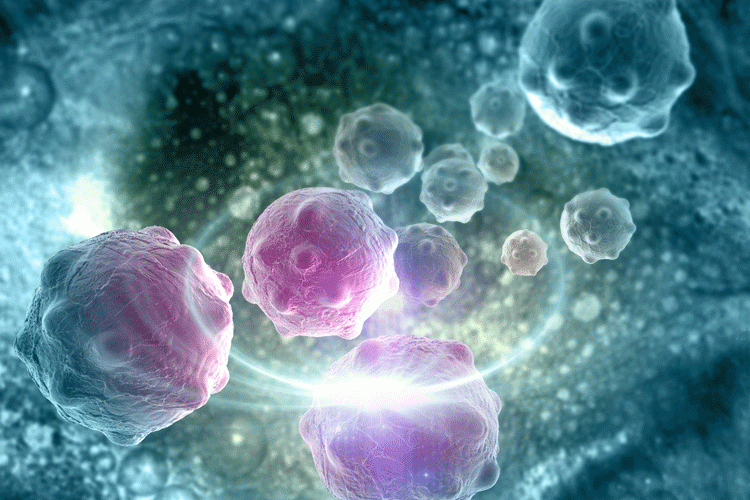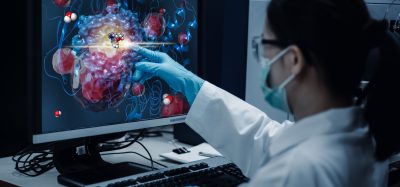Therapeutic antibodies in cancer therapy
Posted: 18 September 2019 | Nikki Withers (Drug Target Review) | No comments yet
Monoclonal antibodies have shown great promise in the treatment of various cancers. This article discusses how therapeutic antibodies are produced and the various treatment strategies that are currently being adopted.


According to the World Health Organization (WHO), cancer is the second leading cause of death worldwide and was responsible for an estimated 9.6 million deaths last year. Globally, about one in six deaths is due to cancer.1
There are many cancer treatment options available and the type a patient receives will depend on the nature of the cancer and how advanced it is. Current treatment options include surgery, radiation therapy, chemotherapy, biological therapy, hormone therapy, stem-cell transplantation and precision medicine. Some patients may have only one treatment, but most will have a combination of treatments.
Biological therapy involves either the use of living organisms, substances derived from living organisms or laboratory-produced versions of these substances for treatment. Some biological cancer therapies stimulate the body’s natural immune system to act against the cancerous cells. These types of biological therapy, often known as immunotherapy, do not directly target cancer cells, while others, such as antibodies, target cancer cells directly. Biological therapies that interfere with specific molecules involved in tumour growth and progression are also referred to as targeted therapies.
Therapeutic antibodies
Antibodies are proteins that constitute a key component of the adaptive immune response. They are produced by B cells and function by precisely targeting and binding to a target antigen or receptor site on the cell surface, including cancer cells. After binding to these cells, an immune response is stimulated, which results in either disruption of pathways that are crucial to cancer cell activity or recruitment of immune cells that lyse the cancer cells.
There are several steps involved in the production of therapeutic monoclonal antibodies (mAbs) in the lab:
- Immunisation of animals by antigen injection
- Isolation of antibody-forming cells from the spleen
- Formation of hybridomas of antibody-forming cells with cultured tumour cells
- Screening of hybridomas for antibody production and selection of the best antibodies
- Cloning and expansion of hybridomas to produce mAbs.
The antibody therapy is then administered to the patient.
Although immunotherapy strategies to treat cancer are all based on the use of antibodies or other immune system components, there are alternative mAb strategies for treatment. Examples include antibody-dependent cell-mediated cytotoxicity (ADCC) and bispecific antibody (bsAb)-mediated cytotoxicity.
Antibody-dependent cell-mediated cytotoxicity
ADCC is a mechanism of cell-mediated immune defence. It is part of the adaptive immune response due to its dependence on a prior antibody response. An effector cell of the immune system (often natural killer cells) will actively lyse a target cell whose membrane-surface antigens have been bound by specific antibodies. For cancer treatment, various immune cells can effectively have a cytotoxic effect on cancer cells through this mechanism. It usually involves the binding of both cell types through an antibody and, in most cases, mAbs are used for such therapies.
Mechanism of ADCC in cancer immunotherapy
The mechanism of ADCC in cancer immunotherapy involves several steps:
- Tumour-specific mAbs recognise tumour-selective antigens on the surface of the target cancer cells
- The Fc receptor expressed by the effector immune cells recognises and binds to the Fc portion of the antibody that is attached to the cancer cells
- After binding of both cell types to the antibody, the immune cell secretes proteins and enzymes that induce cancer cell lysis.
Conventional assays, such as 51-chromium assays, can be used to measure ADCC cancer treatment in vitro. This requires pre-labelling of either the cancer or immune cells. This label is released when cancer cell death is induced and can then be measured and quantified.
Bispecific antibody-mediated cytotoxicity
Despite being effective in many cases, some mAbs exhibit shortcomings in cancer treatment. This has resulted in the creation of bsAbs, which combine the specificities of two antibodies in order to simultaneously bind to different antigens or epitopes. Genetic engineering has enabled a wide range of bsAbs to be developed and despite each having a different mode of action, the overall goal is either cancer cell death or inhibition of cancer cell growth.
Bi-specific T-cell engagers (BiTEs)
BiTEs are a class of artificial bsAbs. They are fusion proteins, which consist of two single-chain variable fragments (scFv) connected in tandem by a flexible linker. They are able to link a cytotoxic T cell and a cancer cell with high specificity, activating the T cell and inducing cytolysis of the cancer cell.
BiTEs work in the following way:
- They bind to the CD3 receptor of the cytotoxic T cells and to a tumour-specific antigen found on the cancer cell. This enables formation of a link between both cell types.
- The T cell is then activated and produces and excretes proteins (eg, perforin and granzymes)
- These proteins enter the tumour cells and initiate death of the cancer cell.
Receptor tyrosine kinase (RTK)-targeting IgGs
RTK-targeting IgGs are bsAbs that interfere with two or more RTK signalling pathways, either by inactivating the kinases or their ligand. For example, interference of members of the HER family results in inhibition of proliferation of HER-expressing tumour cells and improvement of therapeutic efficacy.
Targeted payload delivery
In addition to BiTEs and RTK-targeting IgGs, there are also bsAbs that do not function as a linker between cells, or proteins and cells, but serve as a vehicle for targeted payload delivery. These bsAbs are used to bind a small entity that can be labelled with a radioactive substance and are directed towards the cancer cells.
Limitations of mAbs in cancer therapy
Although impressive results have been achieved in cancer therapy, mAb-based treatments face several limitations that limit their widespread use as therapeutics.
Firstly, the cost associated with producing mAbs is huge. mAbs are large multimeric proteins that require sophisticated processes to produce. They also require injection in large amounts to achieve clinical efficacy. Therefore, the production of therapeutic antibodies requires the use of large cultures of cells, followed by extensive purification steps leading to extremely high production costs.
Another major limitation faced by mAbs is uptake by the tumour. This depends on a subtle balance between favourable pharmacokinetics and efficient penetration and retention in the targeted tissue, and various characteristics of mAbs, such as molecular size, shape, affinity and valency control these properties.
Finally, while mAbs can have various modes of actions in vitro, the actual mode of action once injected in patients is not always clear and requires extensive testing.
Examples of therapeutic antibodies
As discussed earlier, there are several ways in which antibodies work to kill cancer cells. These include the following, with examples of current therapeutic antibodies and their modes of action.
- Interfering with a key signalling process that promotes growth of the cancer as well as alerting the immune system to destroy the cancer cells that the antibody is attached to. Trastuzumab (Herceptin), which binds to the HER2 protein, is an example.
- Binding to the target protein, resulting in the cancer cells undergoing apoptosis. Examples of this type of therapeutic antibody include alemtuzumab (Campath®.), which binds to a protein on the surface of mature lymphocytes called CD52. Other examples include rituximab (Rituxan®) and ofatumumab (Arzerra ®), which both target a protein on the surface of B lymphocytes called CD20.
- Linking to a toxic substance that kills the cancer cells to which the antibody binds. This might be a poison, such as a bacterial toxin, a small-molecule drug, a light-sensitive chemical (used in photoimmunotherapy) or a radioactive compound (used in radioimmunotherapy). These types of therapeutic antibodies are sometimes called antibody-drug conjugates (ADCs), examples of which include ado-trastuzumab emtansine (Kadcyla®), which is taken up by and kills cancer cells that express HER2 on their surface, and brentuximab vedotin (Adcetris®), which is taken up by and kills lymphoma cells that express CD30 on their surface.
- Bringing activated T cells into close proximity with cancer cells. For example, the therapeutic antibody blinatumomab (Blincyto®) binds to both CD19, a tumour-associated antigen that is overexpressed on the surface of leukaemia cells, and CD3, a glycoprotein on the surface of T cells that is part of the T-cell receptor. Blinatumomab brings leukaemia cells into contact with T cells, resulting in T-cell activation and a killer T-cell response against CD19-expressing leukaemia cells.
References
Related topics
Antibodies, Antibody Discovery, Drug Development, Immuno-oncology, Immuno-oncology therapeutics, Immunotherapy, Monoclonal Antibody, Oncology, Research & Development, Therapeutics
Related conditions
Cancer
Related organisations
Sartorius








